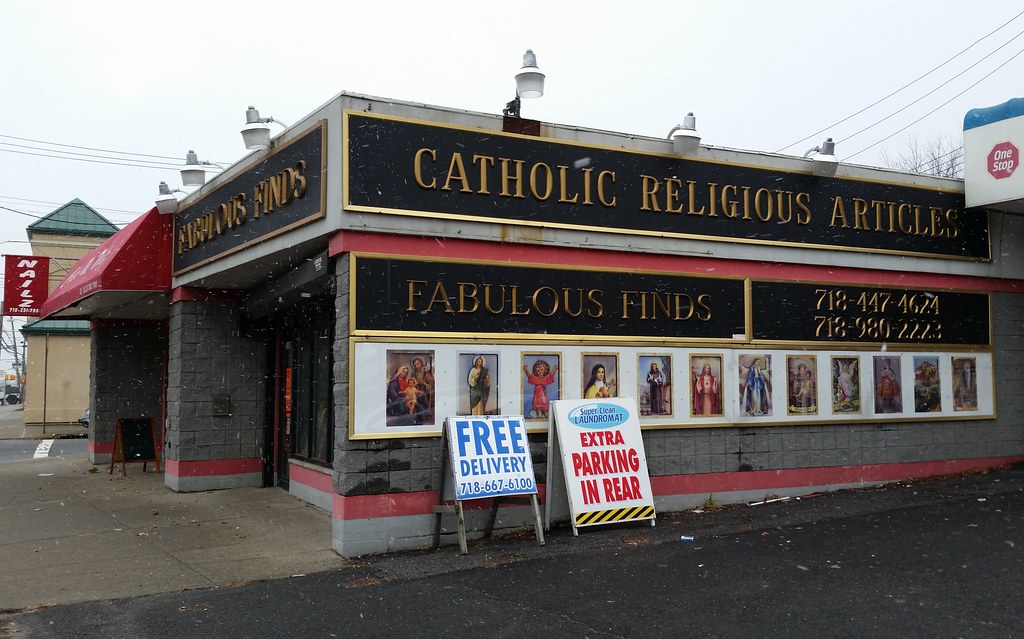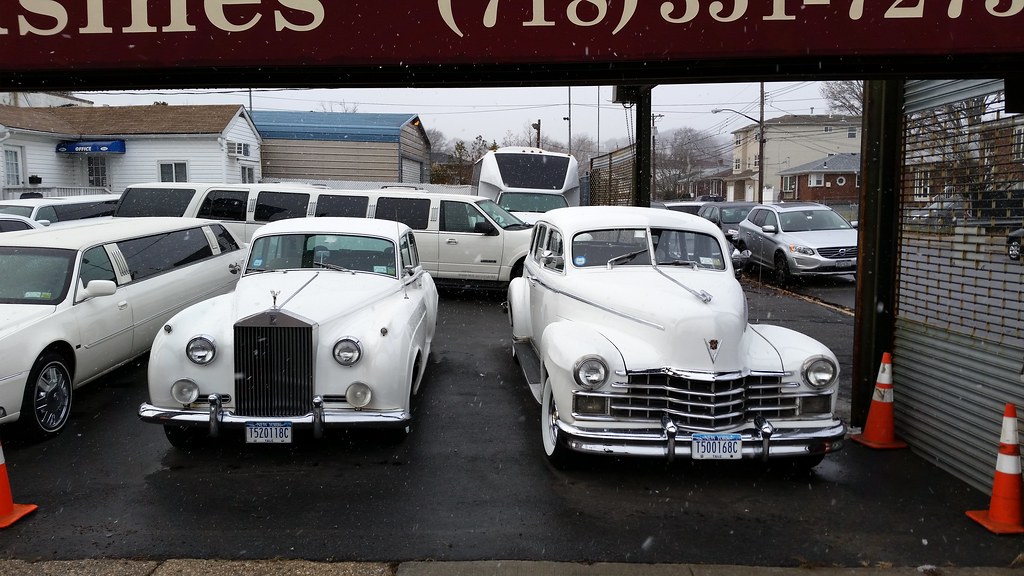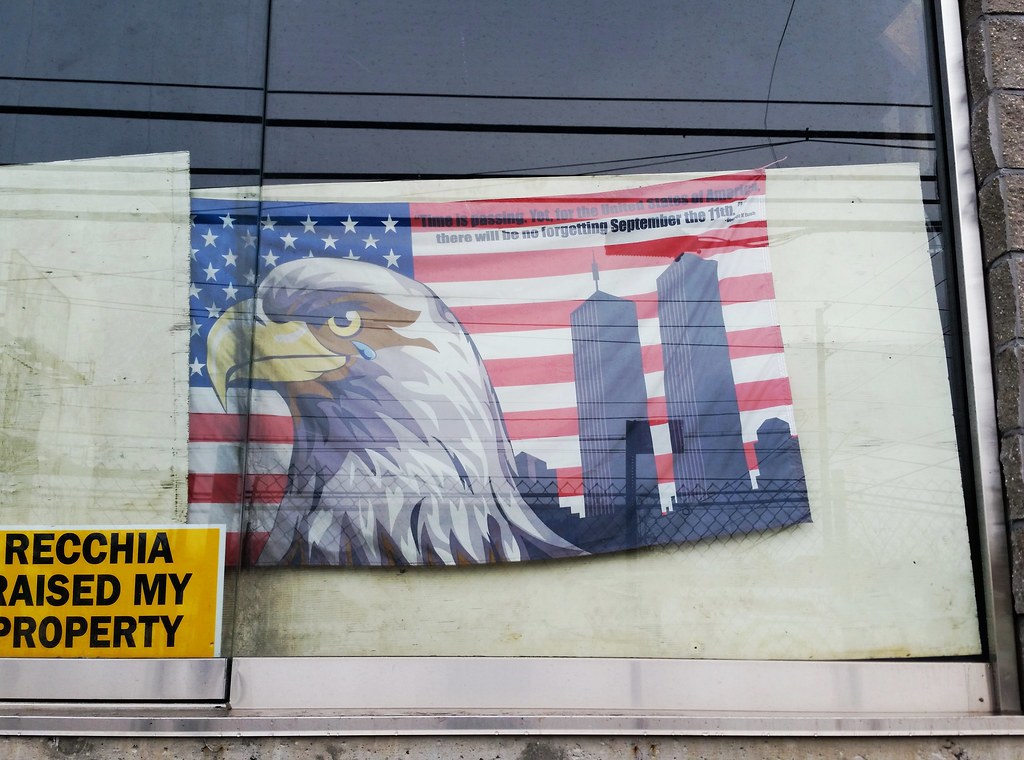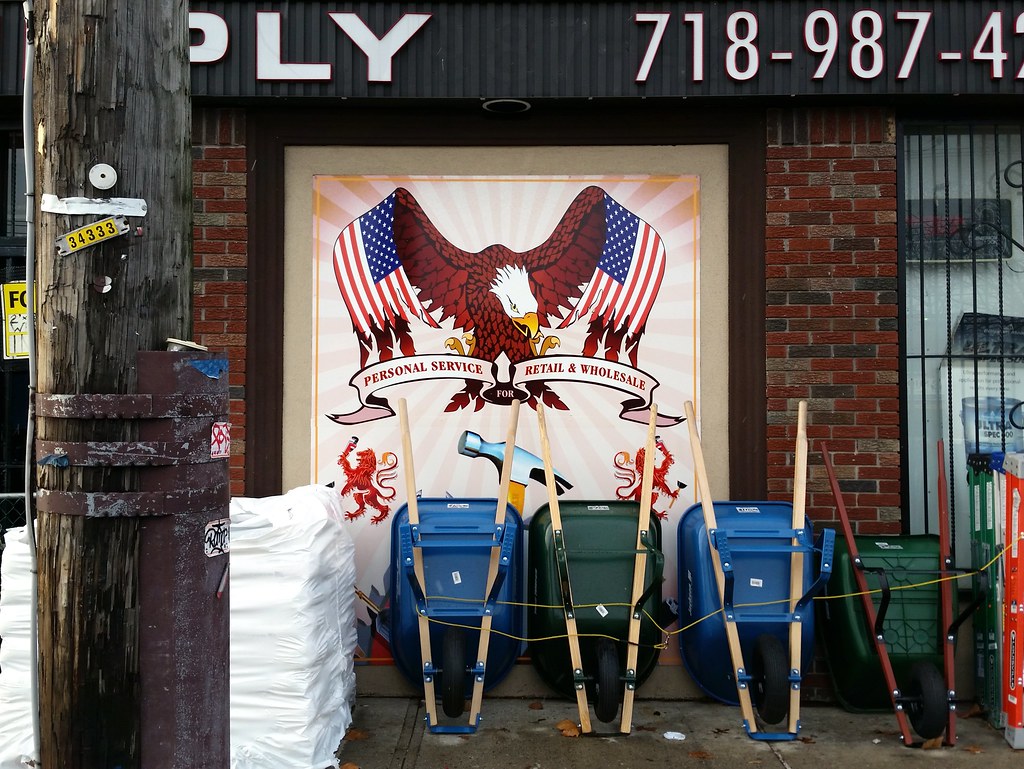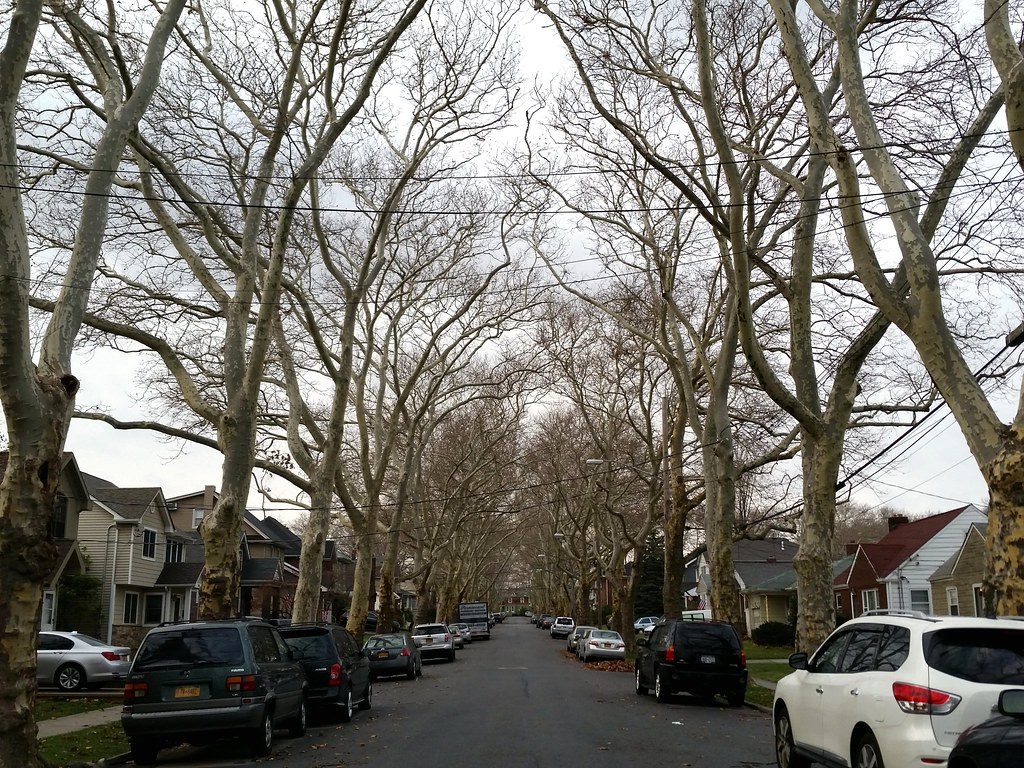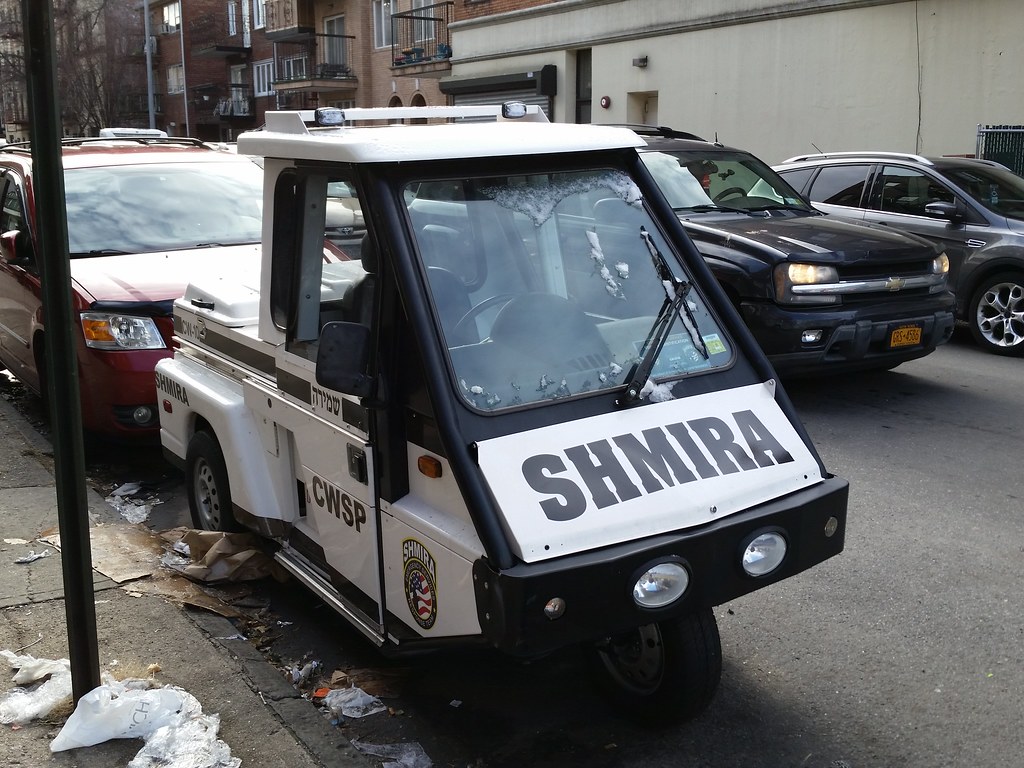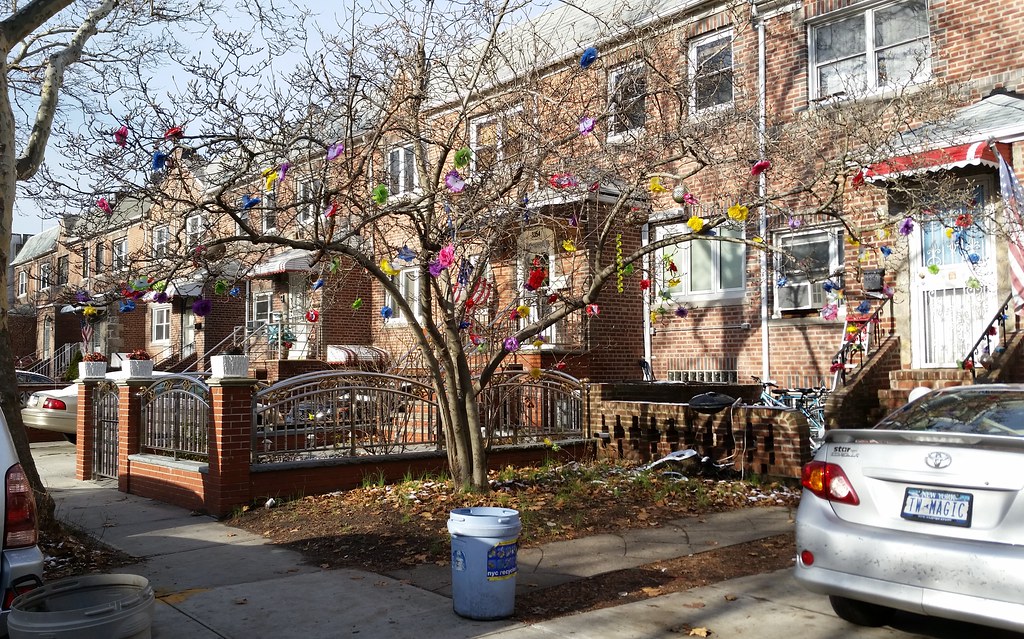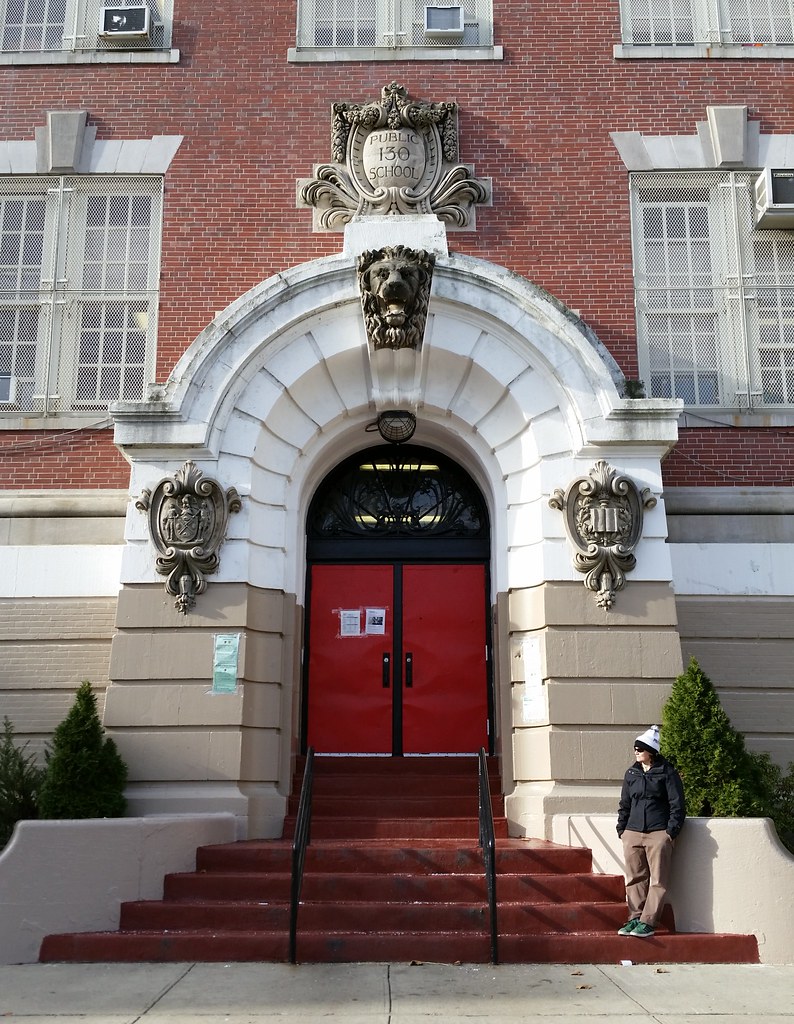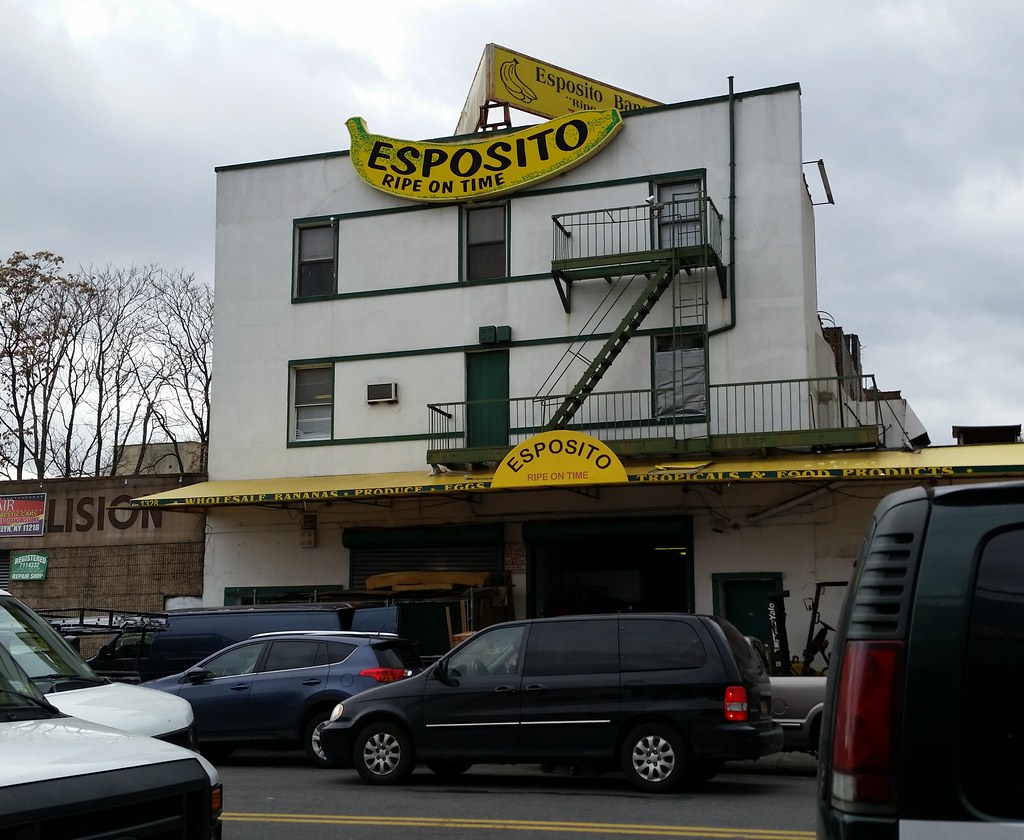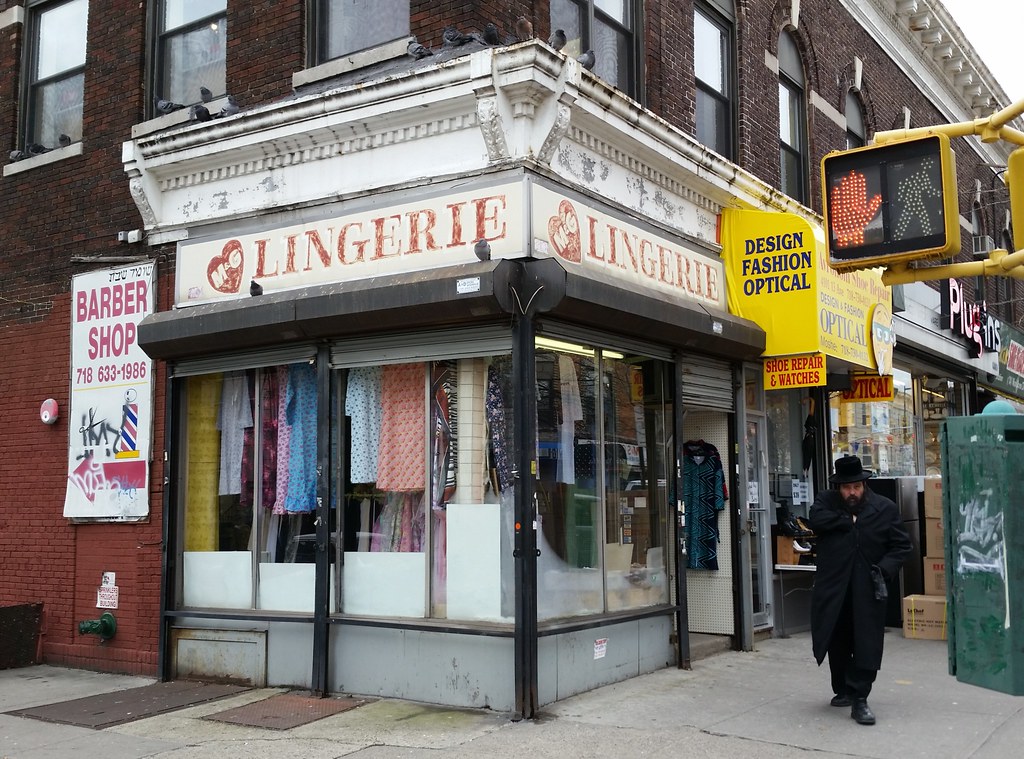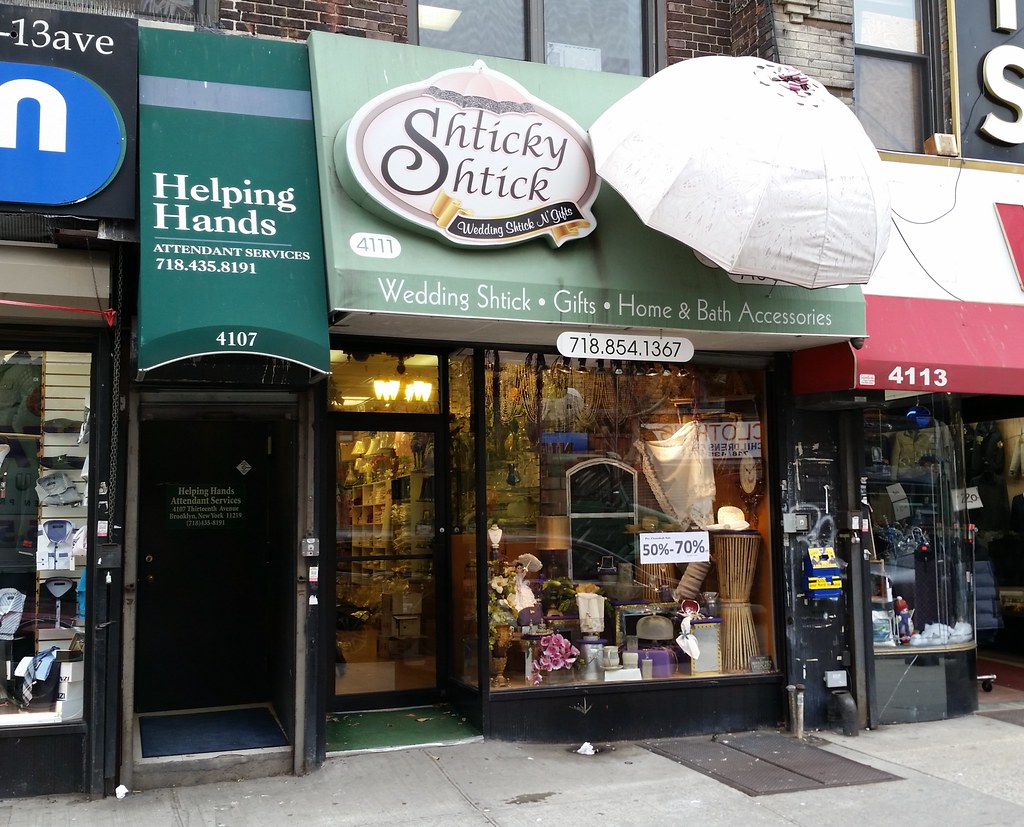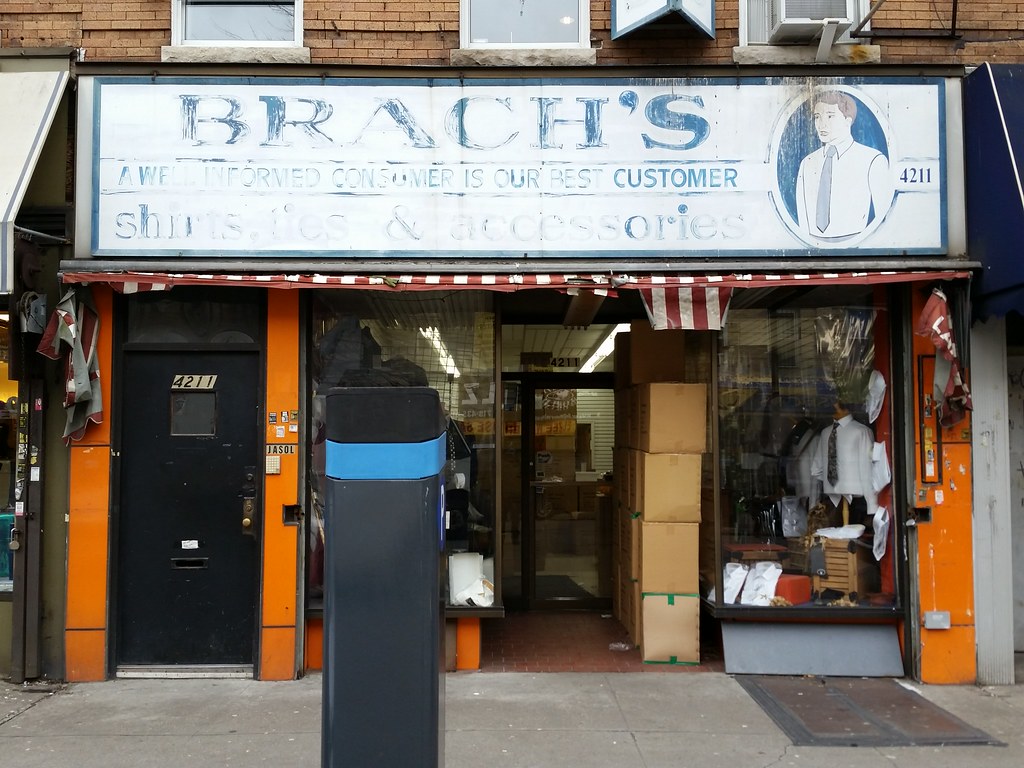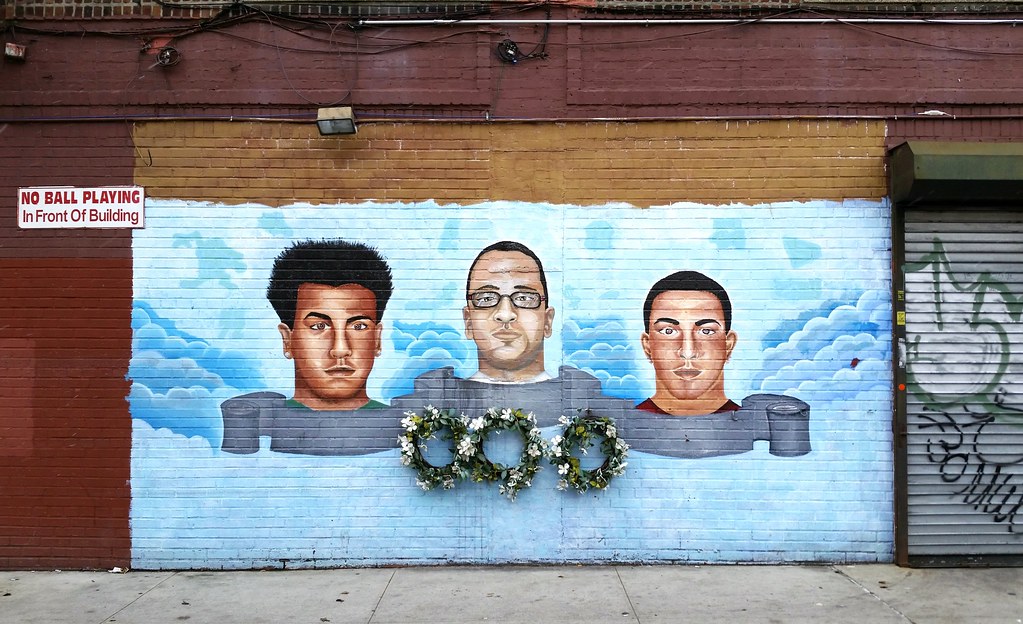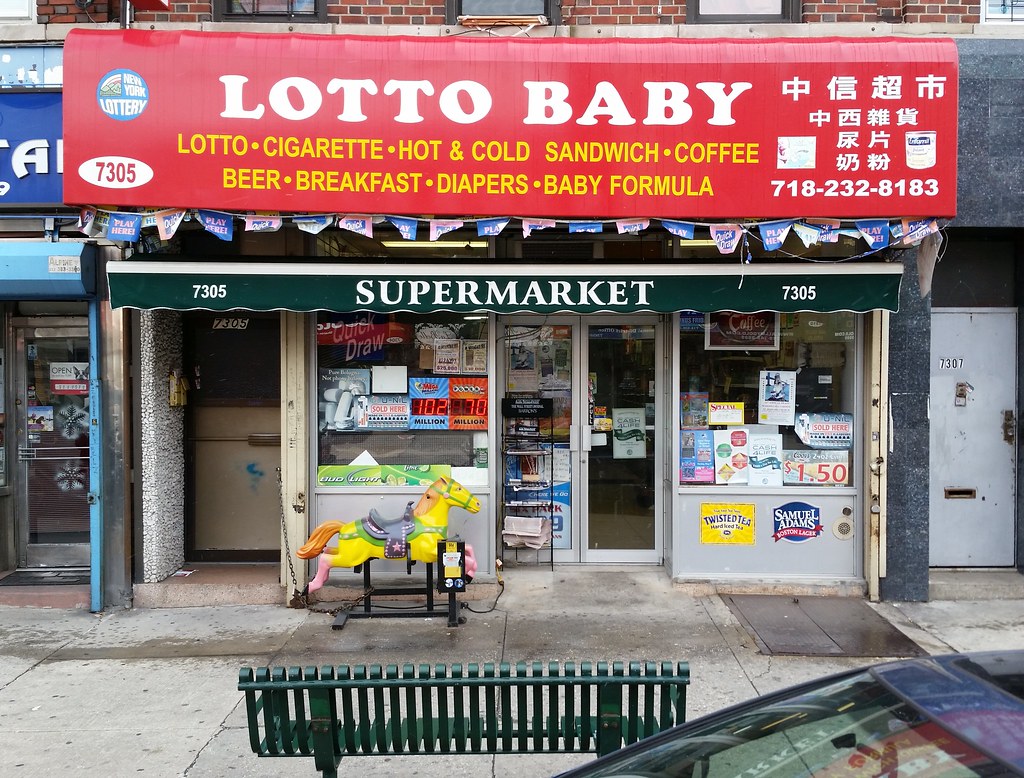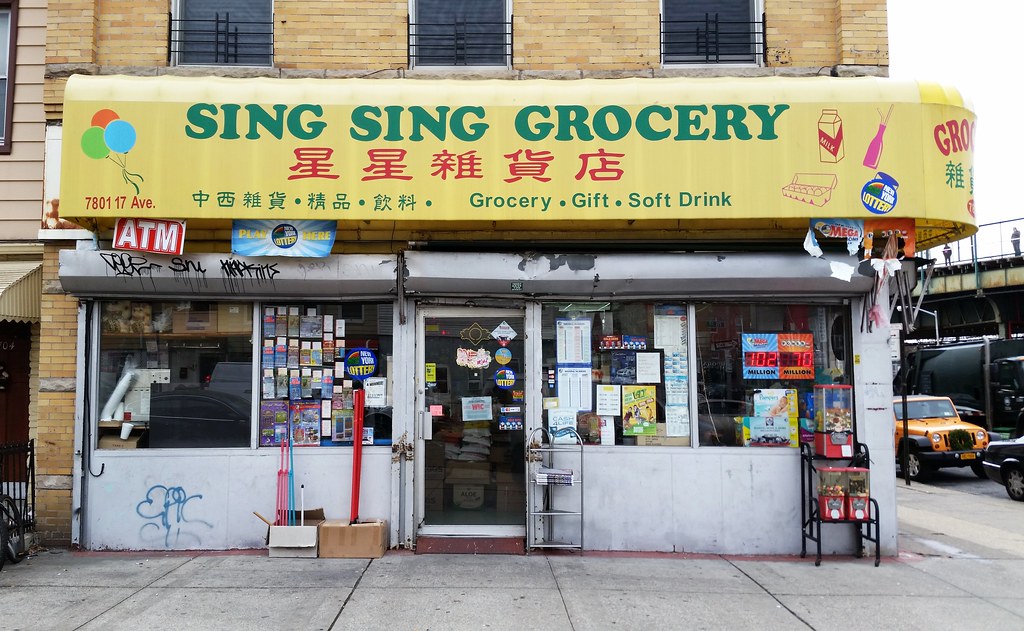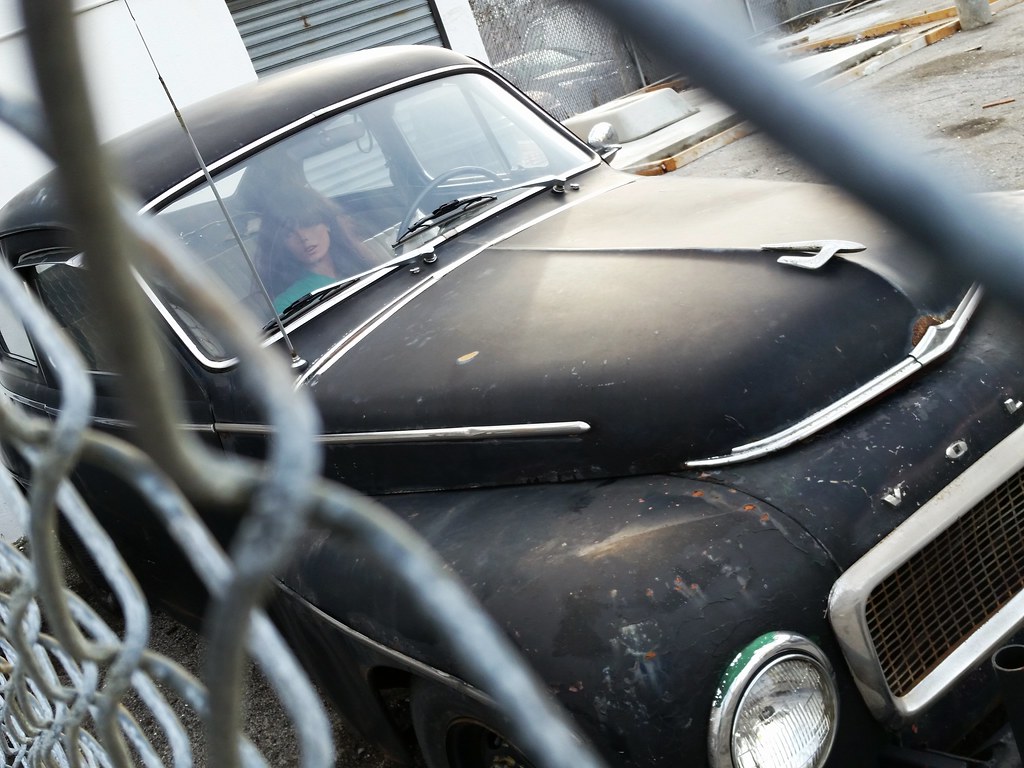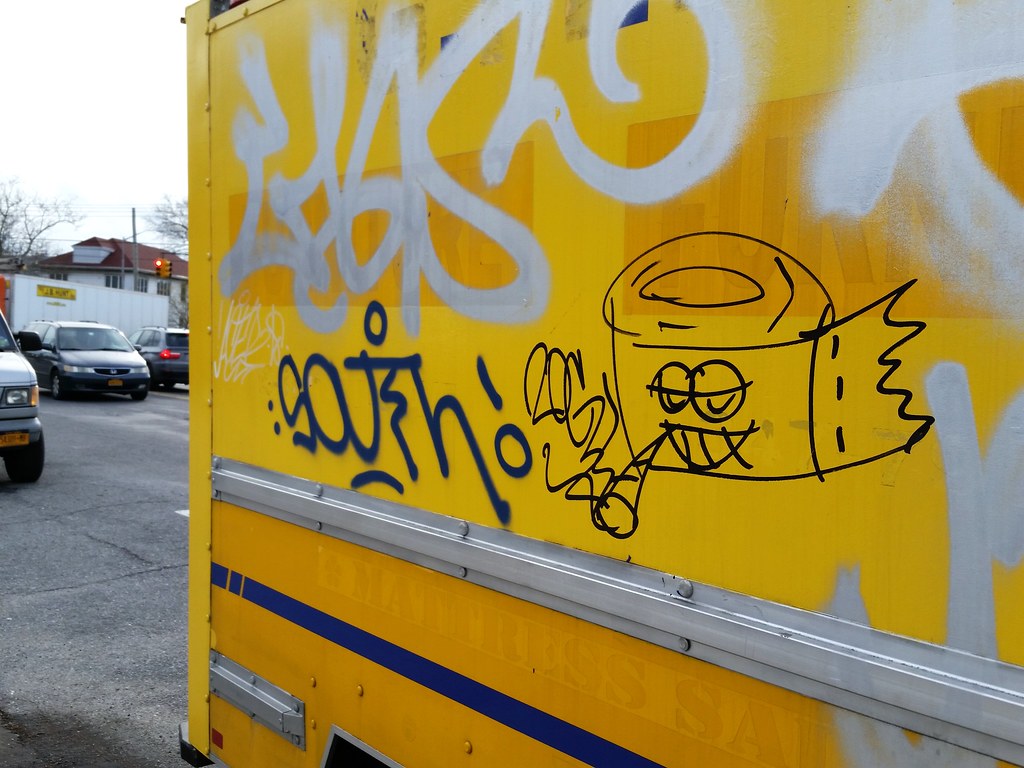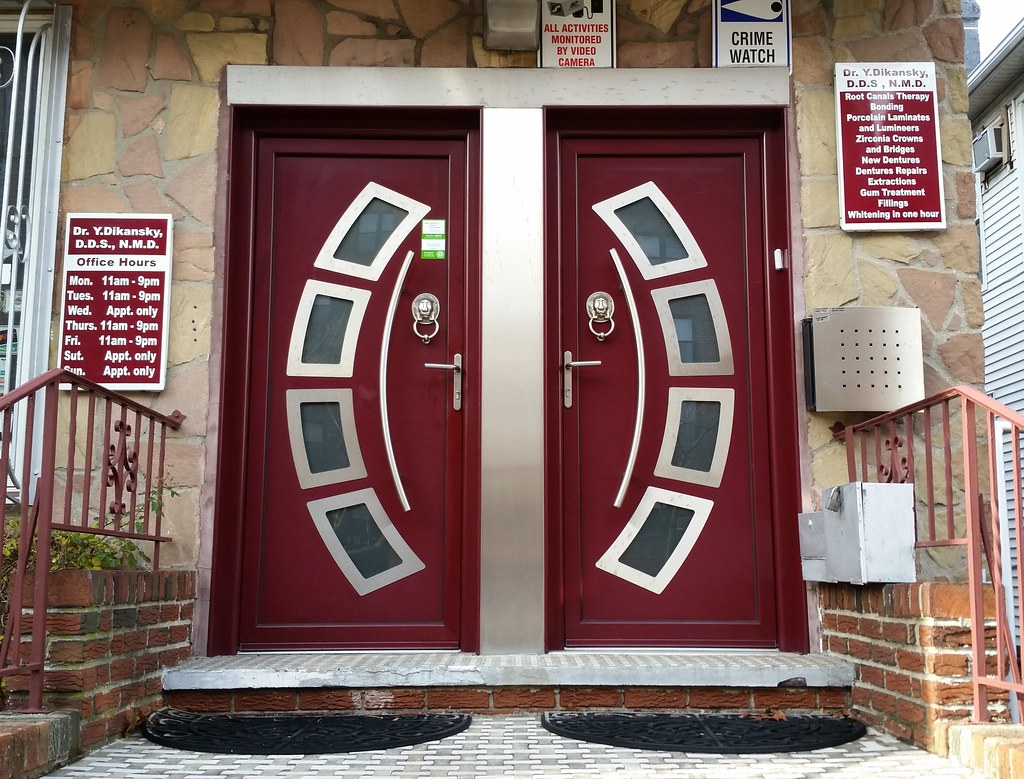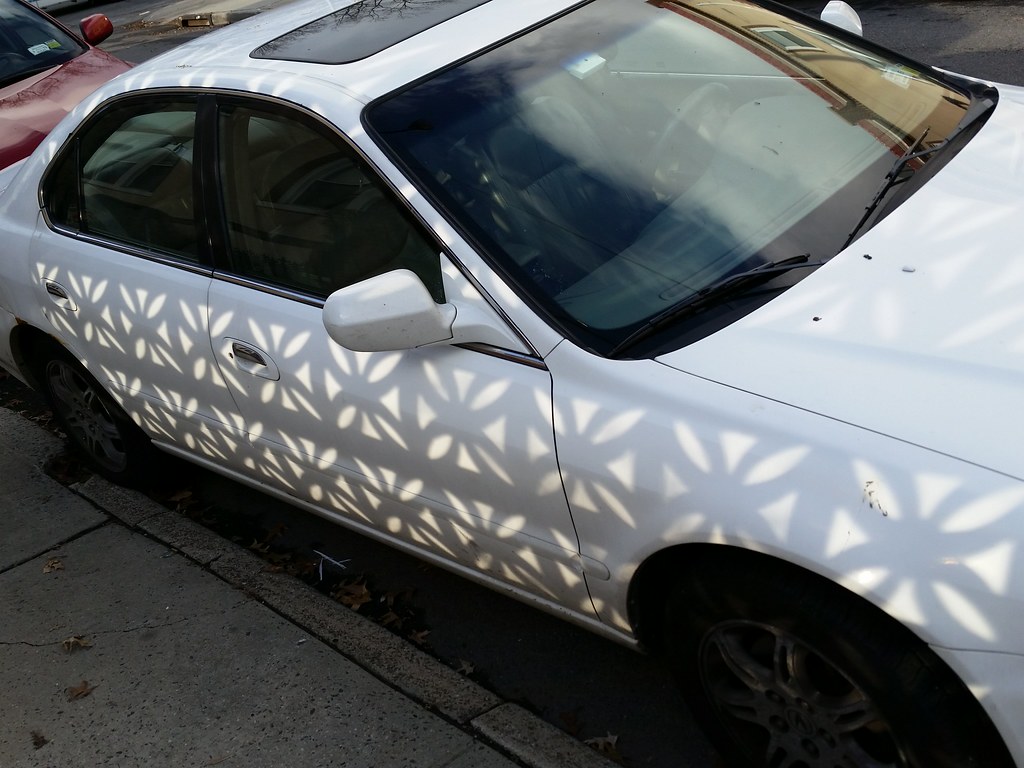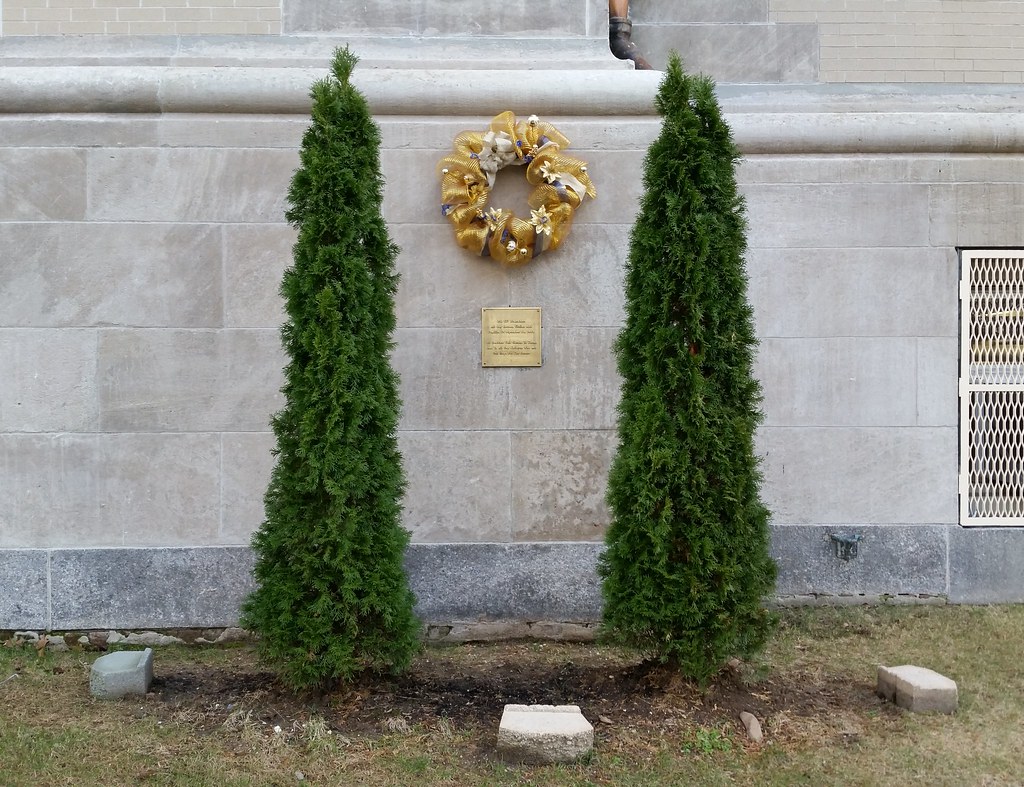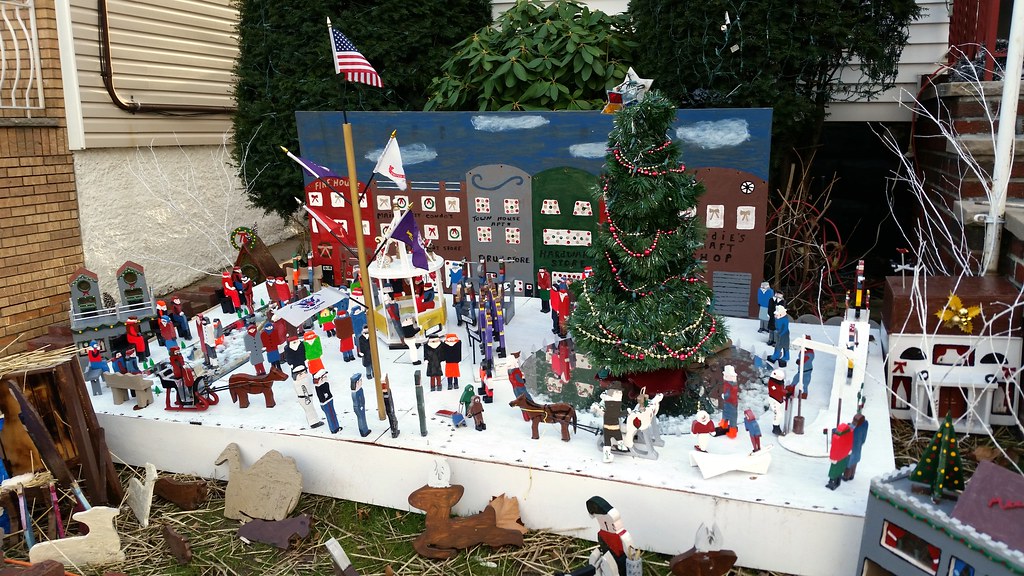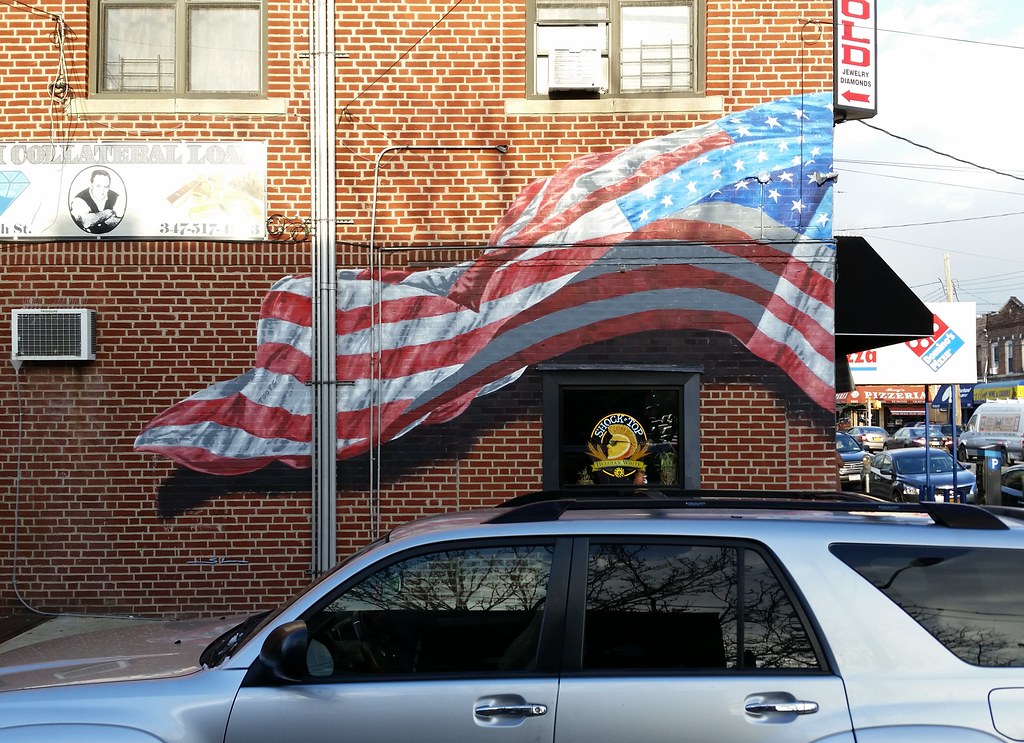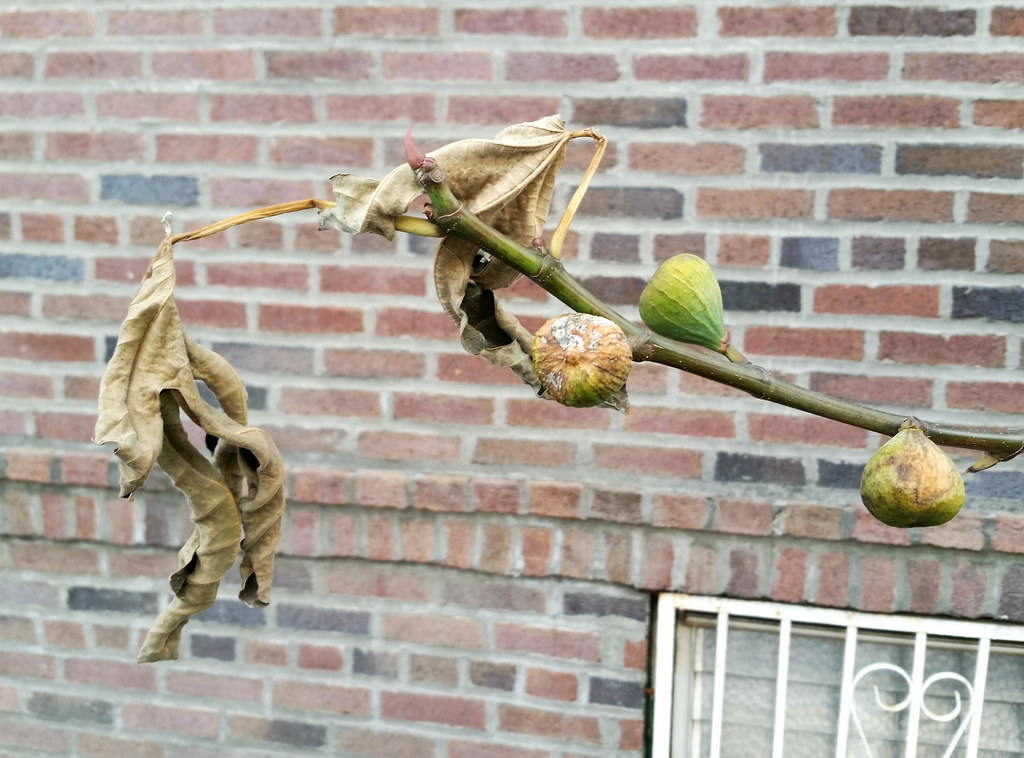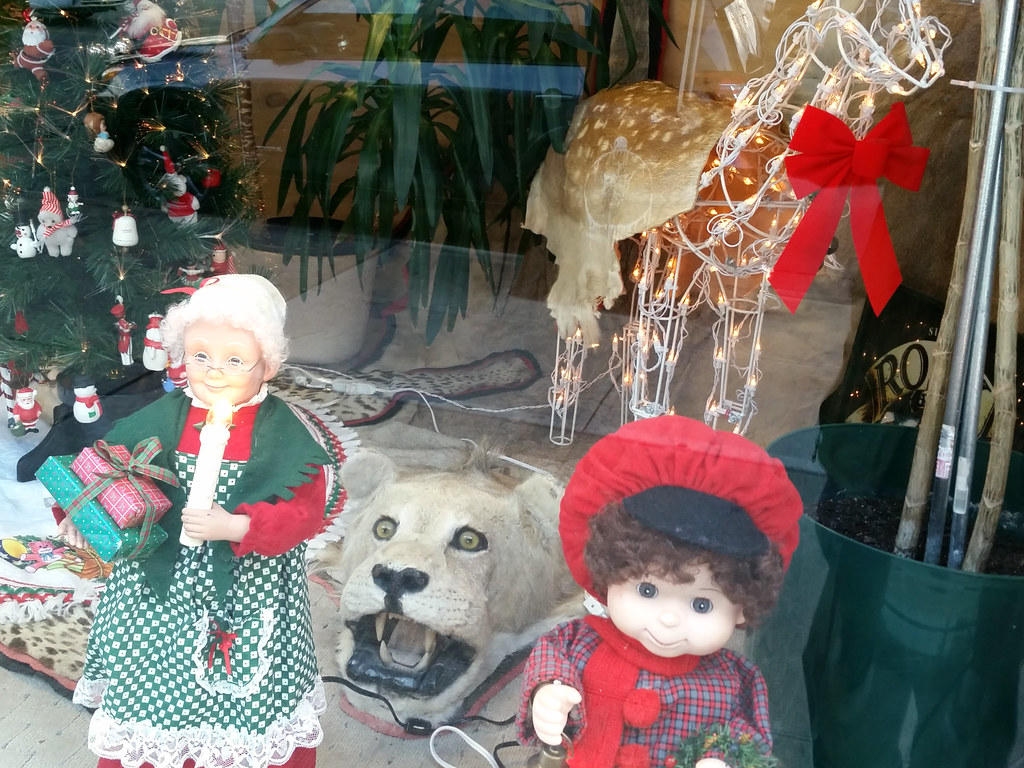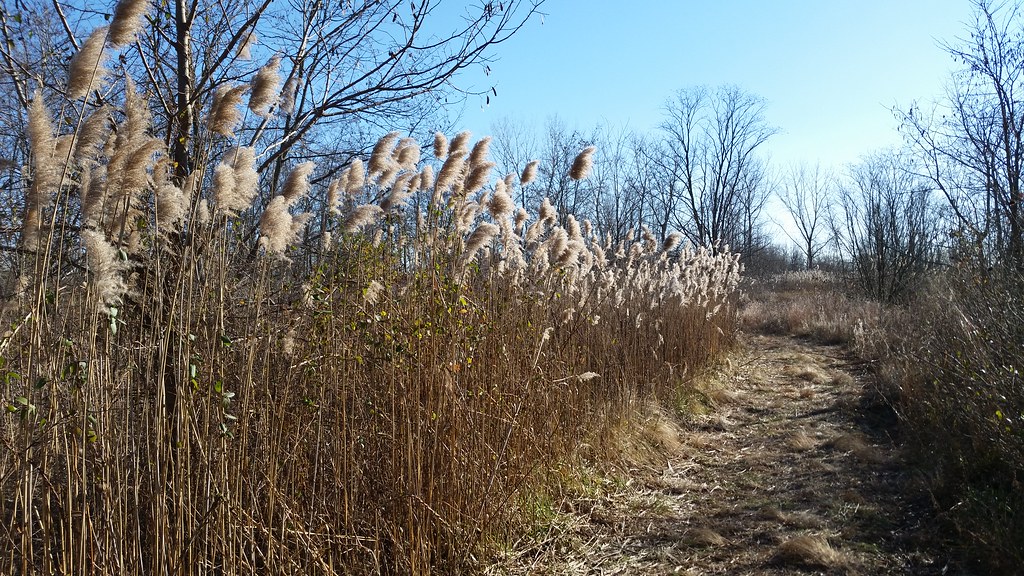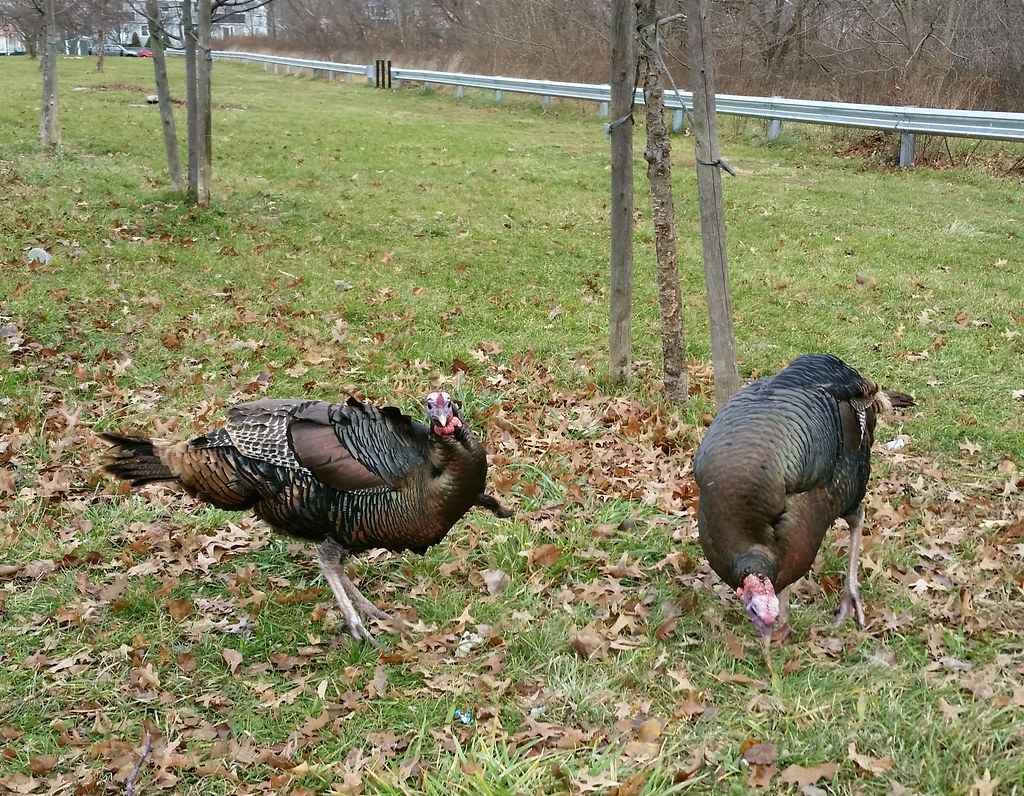
with the wild turkeys of Staten Island

American flag turned bowling lane, courtesy of Scott LoBaido. Also, laser mazes.
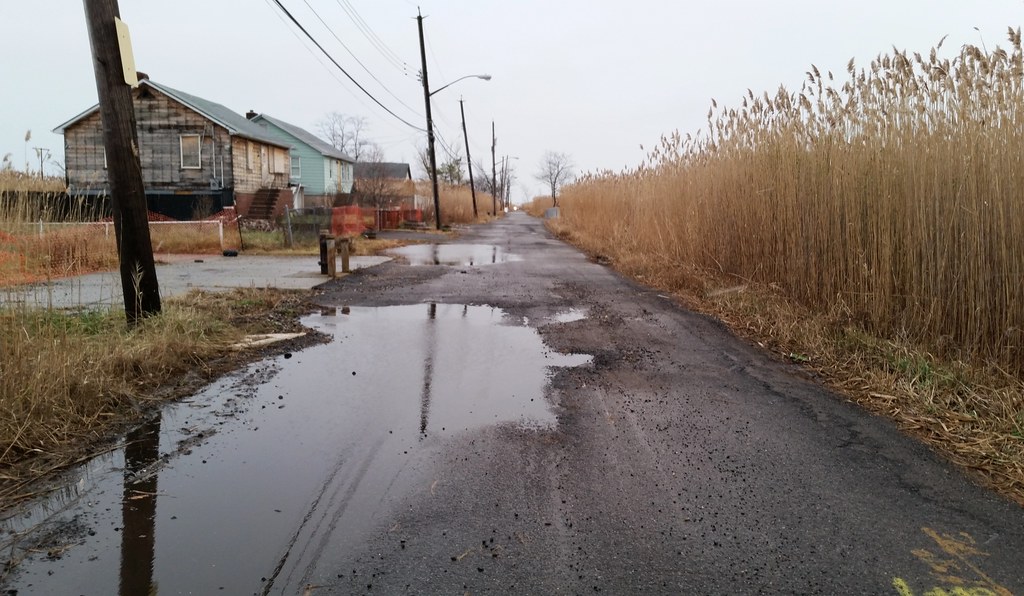
This isolated road built through the marsh (aerial view) was devastated by Hurricane Sandy (video, Street View).
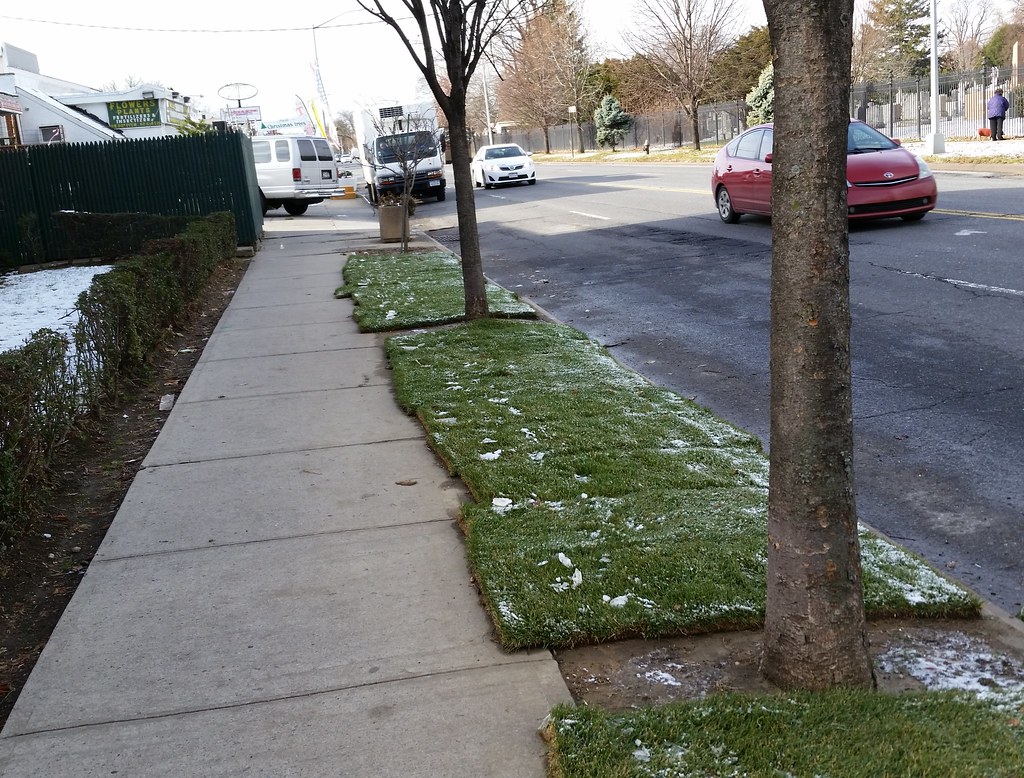
August: Lots of sod
September: Only one strip left
December: Lots of sod
I'm guessing this space has been taken over by Shannon Florist & Nursery, which sells sod and is located just up the block (that's its green sign at left).

FOR ALL OCCASIONS
WE RESTORE VERY-VERY OLD PICTURE
The sign above the door says "EST. 1923", but the studio's Facebook page just says it's been "operating for over 30 years."
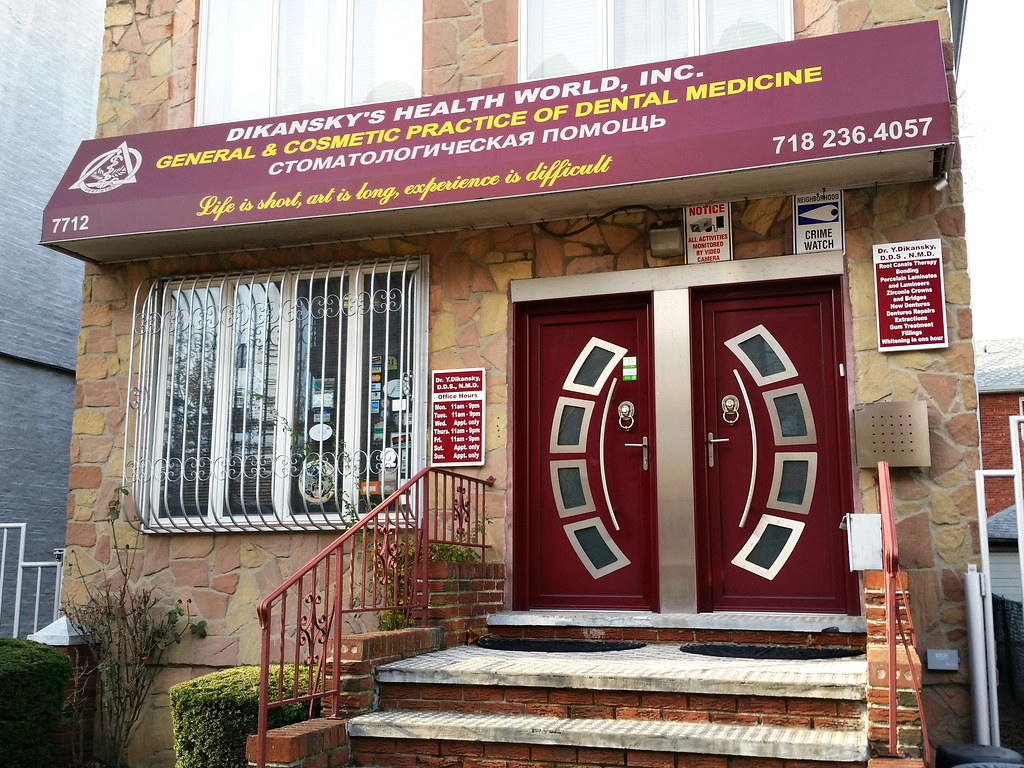
Life is short, art is long, experience is difficult
The awning of Dikansky's Health World, Inc. offers a paraphrased version of Hippocrates's first aphorism.

From a 2012 Brooklyn Daily article:
A Catholic martyr’s death came to life in the streets of Bensonhurst during the weekend of Sept. 29.You can see photos from the most recent procession here.
One hundred fifty members of the Societa Santa Fortunata di New York acted out the horrific killing of Saint Fortunata and bore a casket containing her likeness around the neighborhood on Saturday and Sunday — a tradition that has crossed the Atlantic from the tiny town of Baucina in Palermo, Sicily . . .
Santa Fortunata was a Christian woman living in the Roman Empire during the persecuting rule of the Emperor Diocletian. In the year 303 AD, Fortunata refused a proposal from the emperor’s son because she didn’t want to convert, and so the prince first threw her to lions, shot her with arrows, and boiled her in hot pitch. But Fortunata held onto life until her spurned suitor finally stabbed her in the head. Her remains were brought to Baucina from the mainland in 1790 — where her body is still used in the procession today — and immigrants brought her rite to Brookyn in 1900.
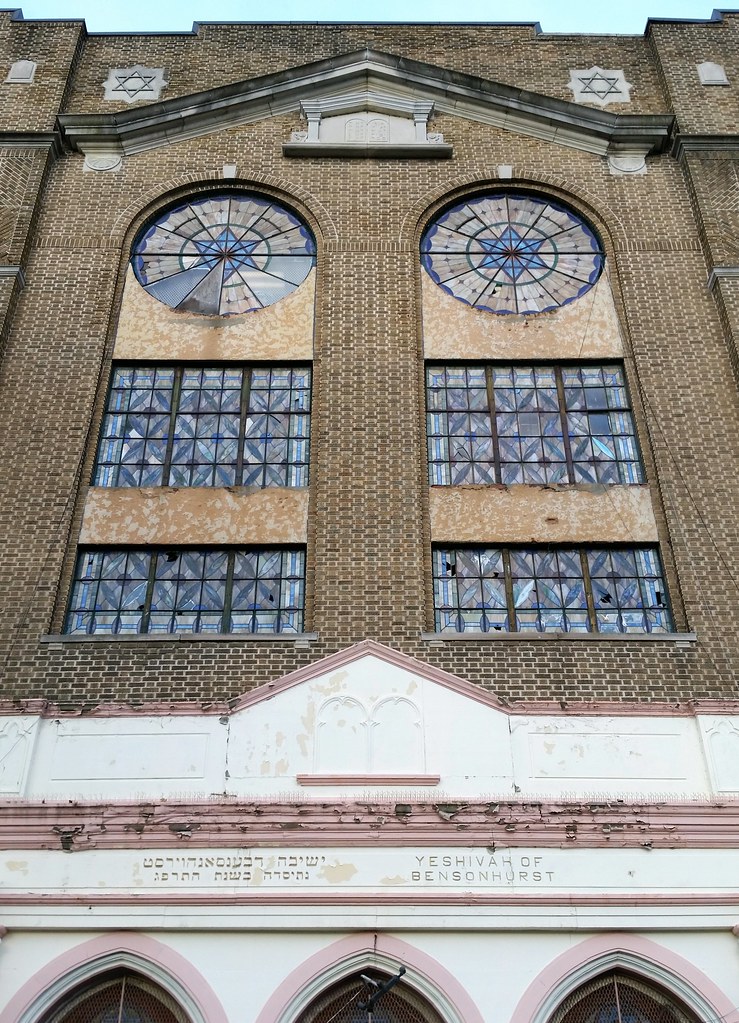
This Jewish high school occupies the former Yeshivah of Bensonhurst.
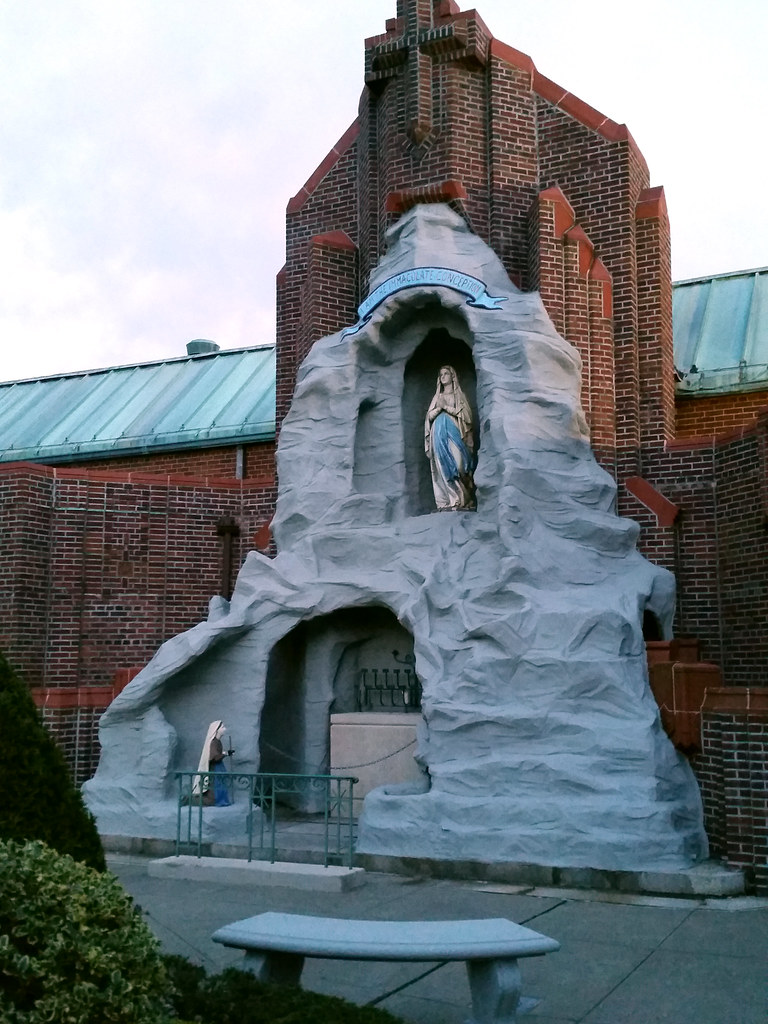
Our Lady of Lourdes and St. Bernadette, at the Shrine Church of St. Bernadette
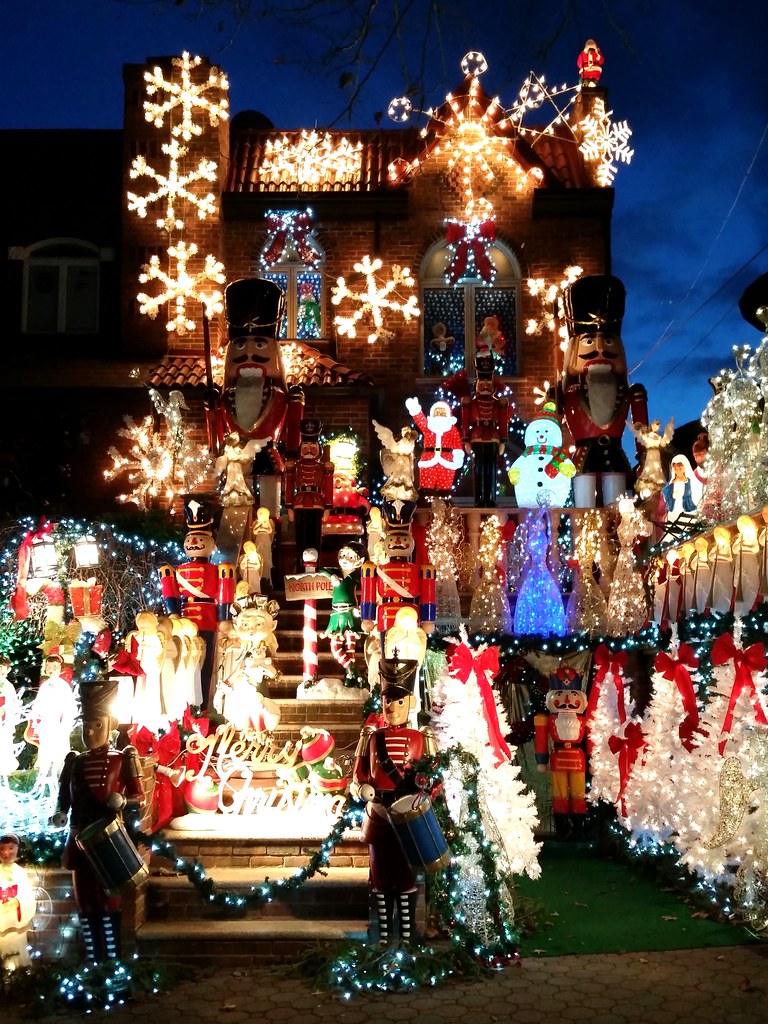
Dyker Heights is home to NYC's most famous Christmas lights. While there are individual houses in other parts of the city that rival the craziest ones here, there's no other neighborhood that can match the density of over-the-top displays — house after house after house — that you'll find in this section of Dyker Heights (photos). At peak hours in December, the most illuminated blocks are packed with people gawking at the lights; tourists come from around the world, and there are even $50-per-person guided bus tours. The house above belongs to Lucy and Angelo Spata, Dyker lights pioneers who have been putting on a Chrismastime spectacle for some three decades now.
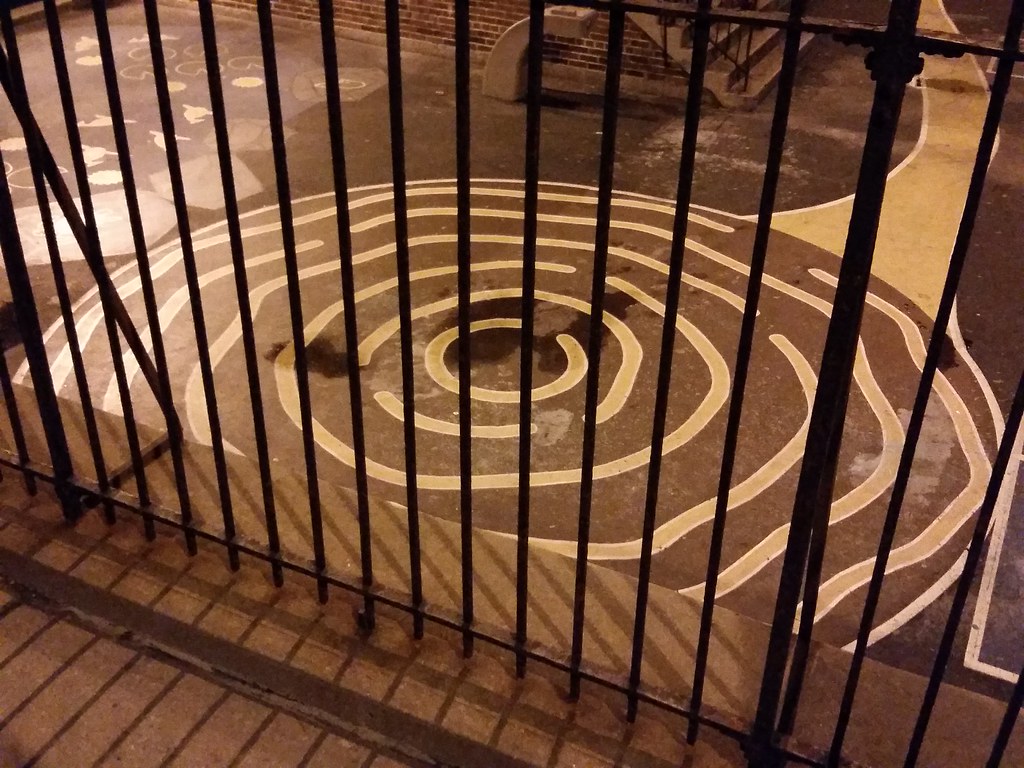
At PS 176. You can see all the labyrinths we've come across so far here.
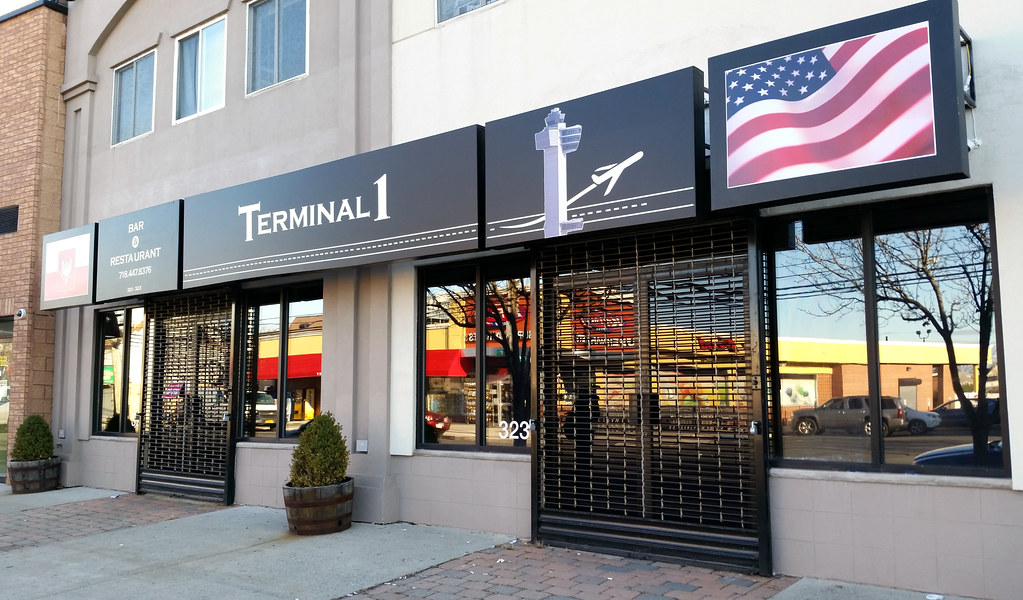
This is apparently Staten Island's only Polish restaurant.
That's JFK Airport's air traffic control tower depicted on the sign. JFK is more than 20 miles away by car, so I was surprised to see a restaurant here named after one of its terminals. But it turns out that LOT, Poland's national airline, operates out of JFK's Terminal 1, so I'd imagine that's where the name came from. (O'Hare in Chicago is LOT's only other US destination.)
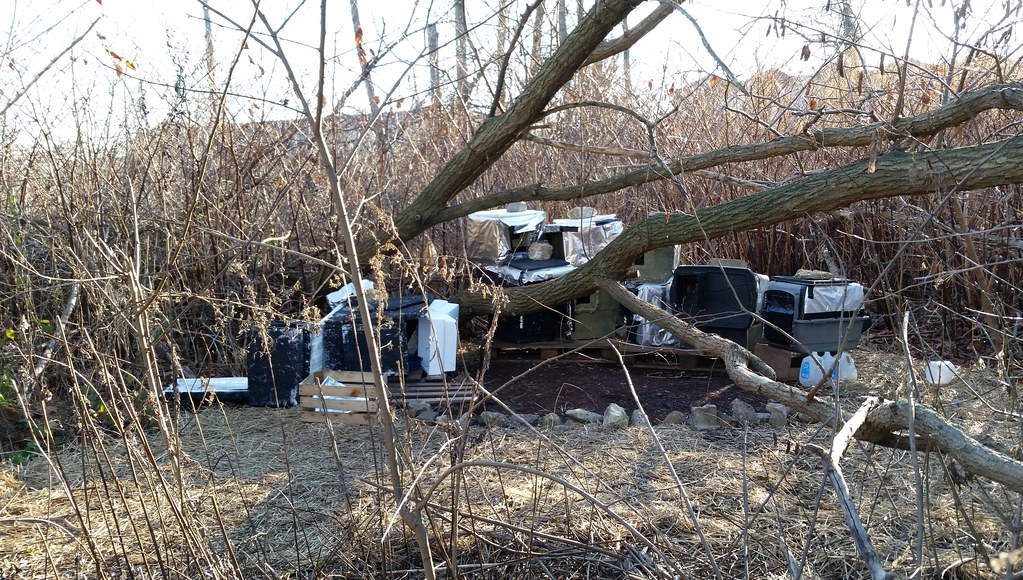
At the dead end of Quincy Avenue, I followed a little trace of a trail a few hundred feet into the woods, and this is where it led me.
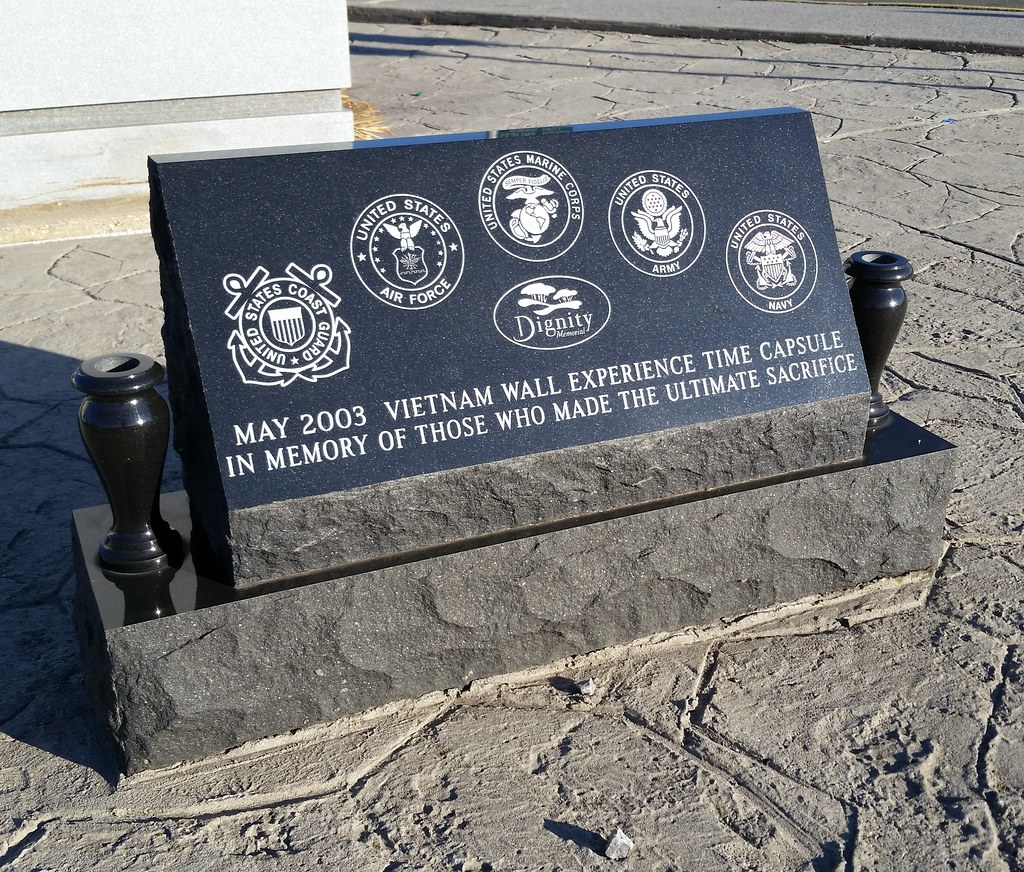
The Vietnam Wall Experience (a.k.a. the Dignity Memorial Vietnam Wall) is a traveling three-quarter-scale model of the Vietnam Veterans Memorial in Washington, D.C. It's currently "temporarily retired" at Fort Benning, Georgia, but prior to that it was exhibited all over the country. It came to Staten Island in May 2003, and it seems that a time capsule was left here to commemorate its visit. I'm not sure what the capsule contains, but perhaps, like a capsule that was buried in Tucson after the wall visited in 2005, it's filled with "memorabilia that was left at the wall".
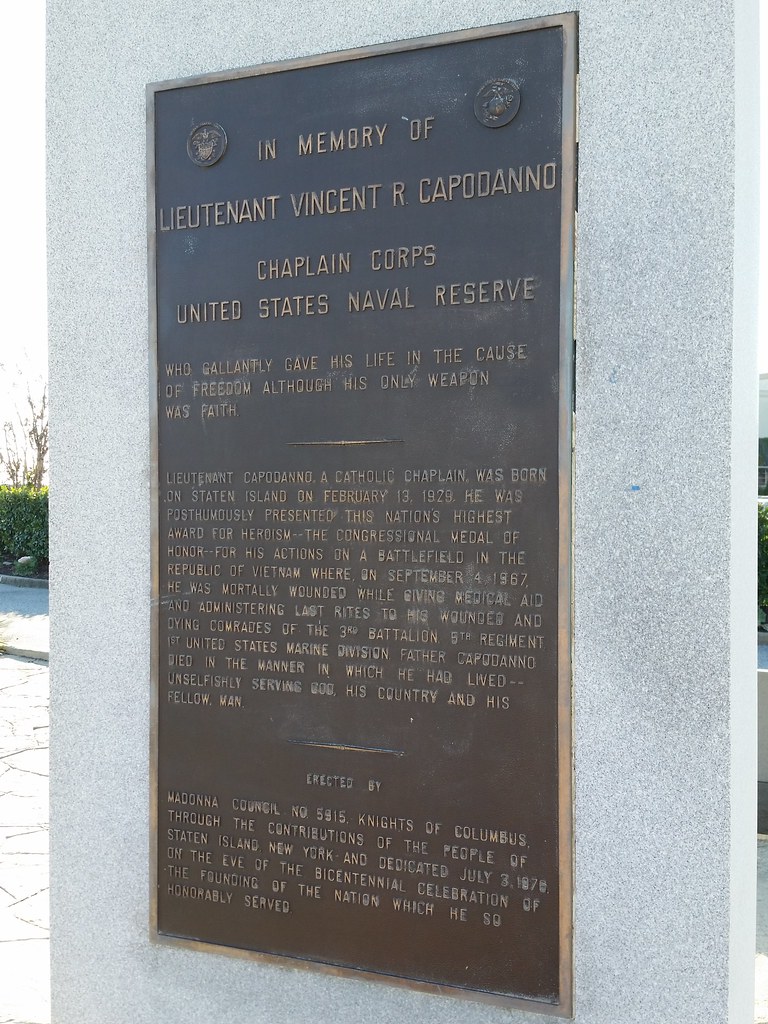
This memorial honoring Father Capodanno stands next to the Vietnam Wall Experience time capsule on Father Capodanno Boulevard. Father Cap was posthumously awarded the Medal of Honor for
conspicuous gallantry and intrepidity at the risk of his life above and beyond the call of duty as Chaplain of the 3d Battalion, in connection with operations against enemy forces. In response to reports that the 2d Platoon of M Company was in danger of being overrun by a massed enemy assaulting force, Lt. Capodanno left the relative safety of the company command post and ran through an open area raked with fire, directly to the beleaguered platoon. Disregarding the intense enemy small-arms, automatic-weapons, and mortar fire, he moved about the battlefield administering last rites to the dying and giving medical aid to the wounded. When an exploding mortar round inflicted painful multiple wounds to his arms and legs, and severed a portion of his right hand, he steadfastly refused all medical aid. Instead, he directed the corpsmen to help their wounded comrades and, with calm vigor, continued to move about the battlefield as he provided encouragement by voice and example to the valiant marines. Upon encountering a wounded corpsman in the direct line of fire of an enemy machine gunner positioned approximately 15 yards away, Lt. Capodanno rushed a daring attempt to aid and assist the mortally wounded corpsman. At that instant, only inches from his goal, he was struck down by a burst of machine gun fire. By his heroic conduct on the battlefield, and his inspiring example, Lt. Capodanno upheld the finest traditions of the U.S. Naval Service. He gallantly gave his life in the cause of freedom.
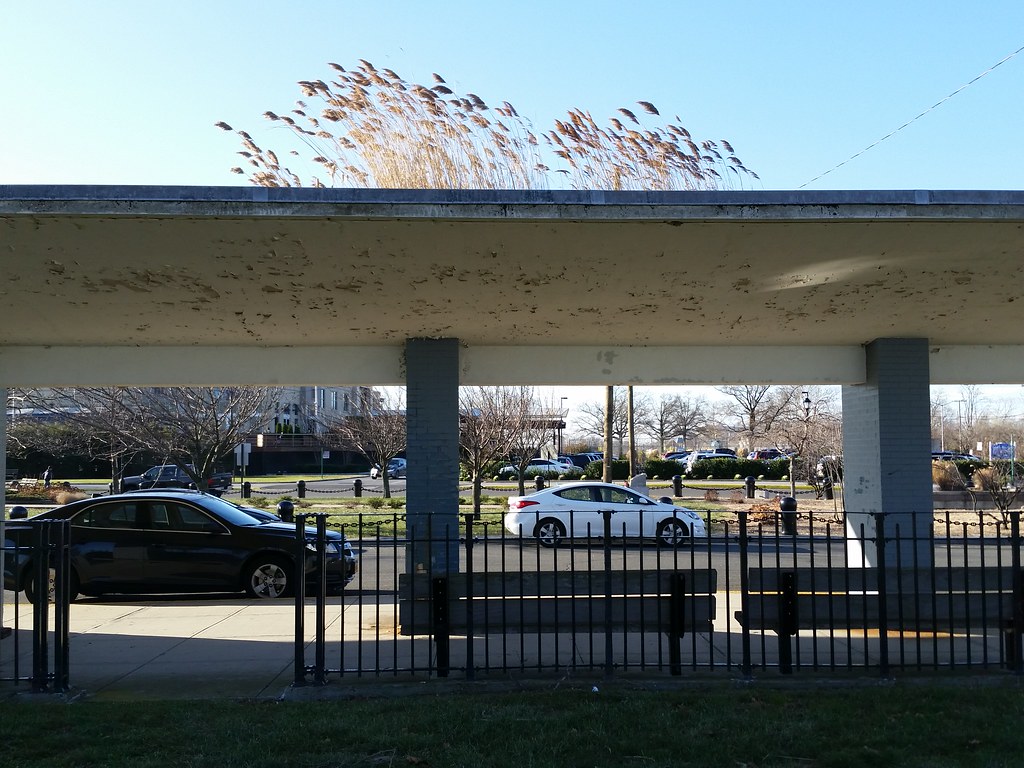
Looks like this middle section of the roof has long been collecting water — and presumably some windblown organic matter as well. Perhaps the phragmites seeds were also blown in on the wind, or maybe they were carried here by birds looking to take a nice bath in the accumulated roof water.
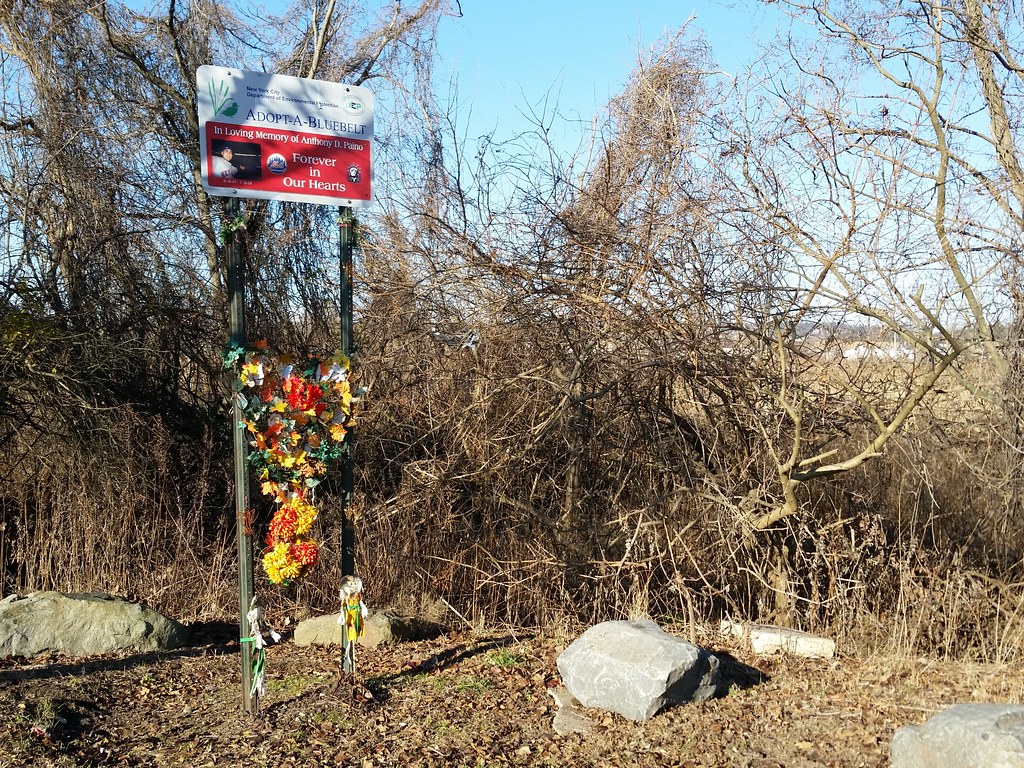
In Loving Memory of Anthony D. Paino
What's a Bluebelt?
The Staten Island Bluebelt is an award winning, ecologically sound and cost-effective stormwater management for approximately one third of Staten Island’s land area. The program preserves natural drainage corridors, called Bluebelts, including streams, ponds, and other wetland areas. Preservation of these wetland systems allows them to perform their functions of conveying, storing, and filtering stormwater. In addition, the Bluebelts provide important community open spaces and diverse wildlife habitats. The Bluebelt program saves tens of millions of dollars in infrastructure costs when compared to providing conventional storm sewers for the same land area. This program demonstrates how wetland preservation can be economically prudent and environmentally responsible.The Adopt-A-Bluebelt program "offers local community groups, companies and individuals an opportunity to enhance Staten Island's open spaces by acting as Sponsors who adopt parts of the Bluebelt." Many sections of Bluebelt have been adopted by families in honor of lost loved ones, and since much Bluebelt land is swampy and inaccessible, the roadside Adopt-A-Bluebelt memorials, while having nothing to do with stormwater management, are often the Bluebelts' most publicly visible features.

This appears to be another roadside memorial, presumably for a child. Up above the bear on the pole are a cross and a package of toy cars, as well as a bar code label that reads "BLUE BEAR" (close-up).
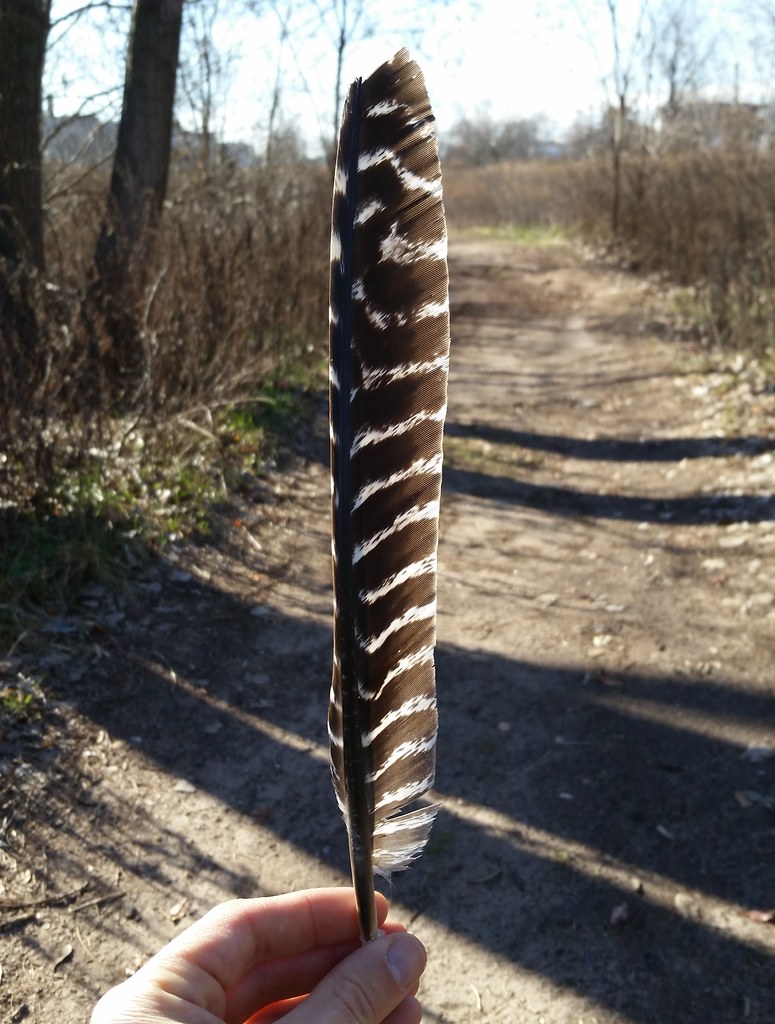
Adjacent to the South Beach Psychiatric Center, Ocean Breeze Park is well within the range of the Staten Island turkeys. (I took this photo right at the edge of the park the other day.) I also saw numerous turkey tracks on the park's dirt paths today.

